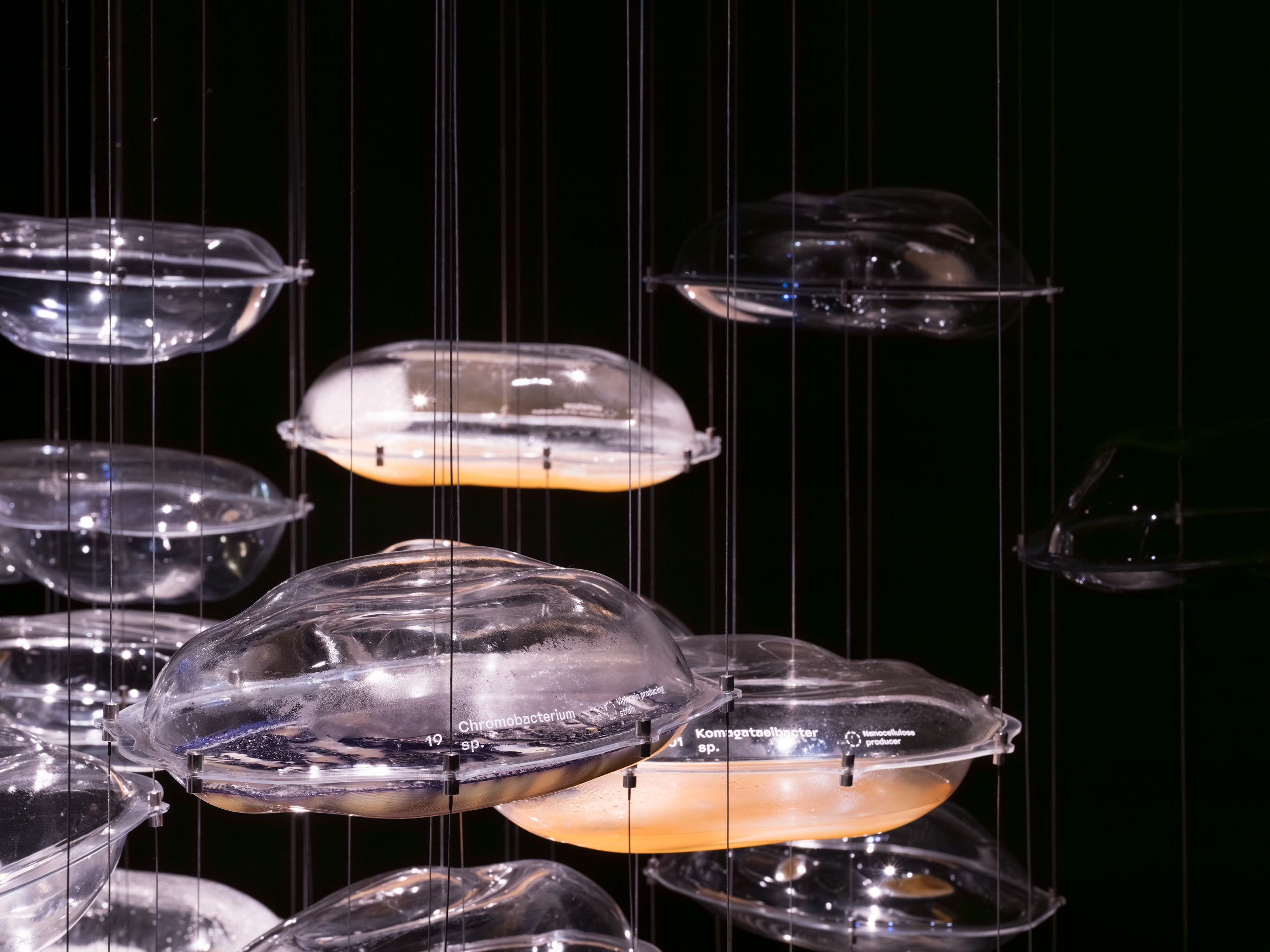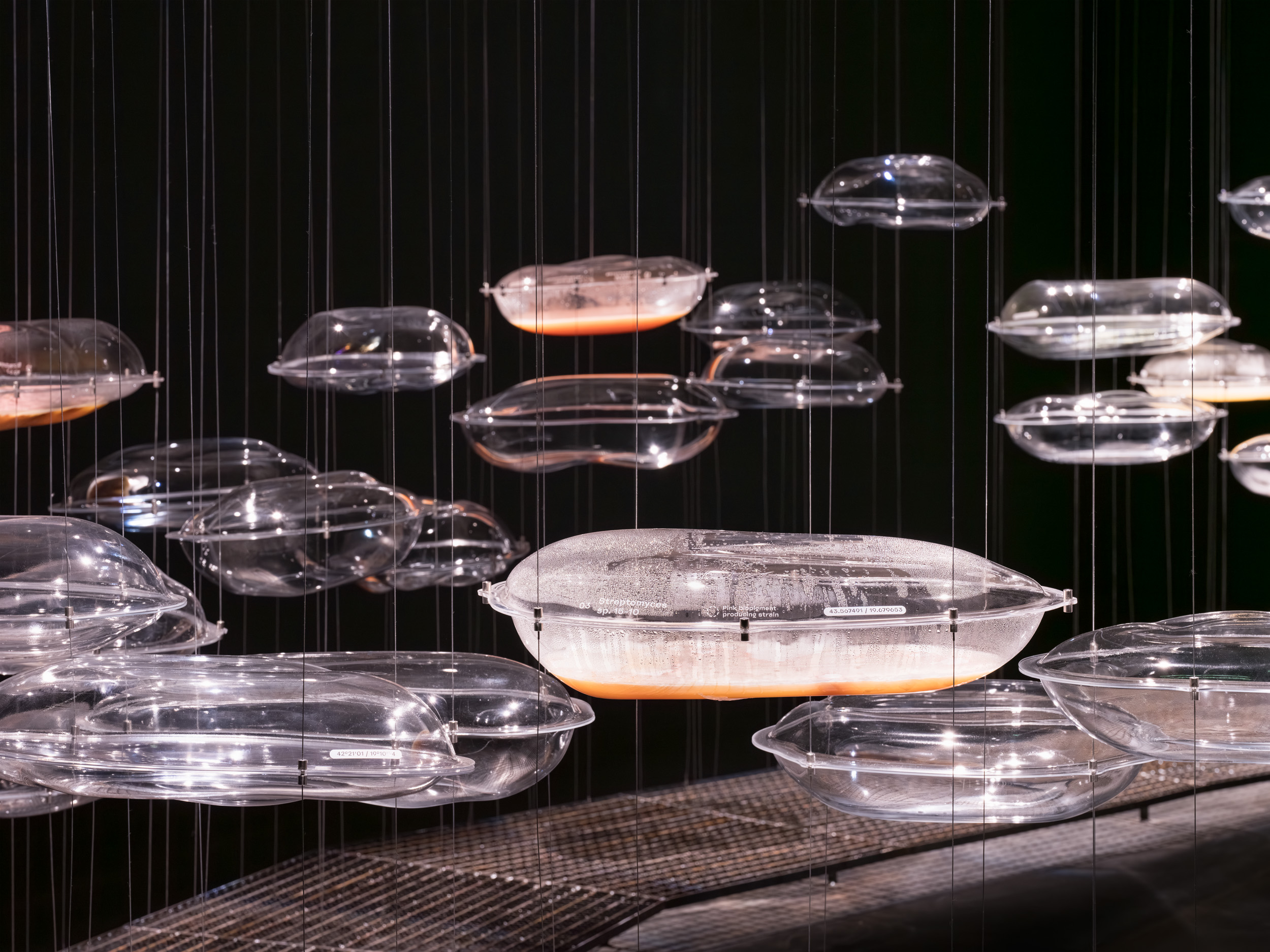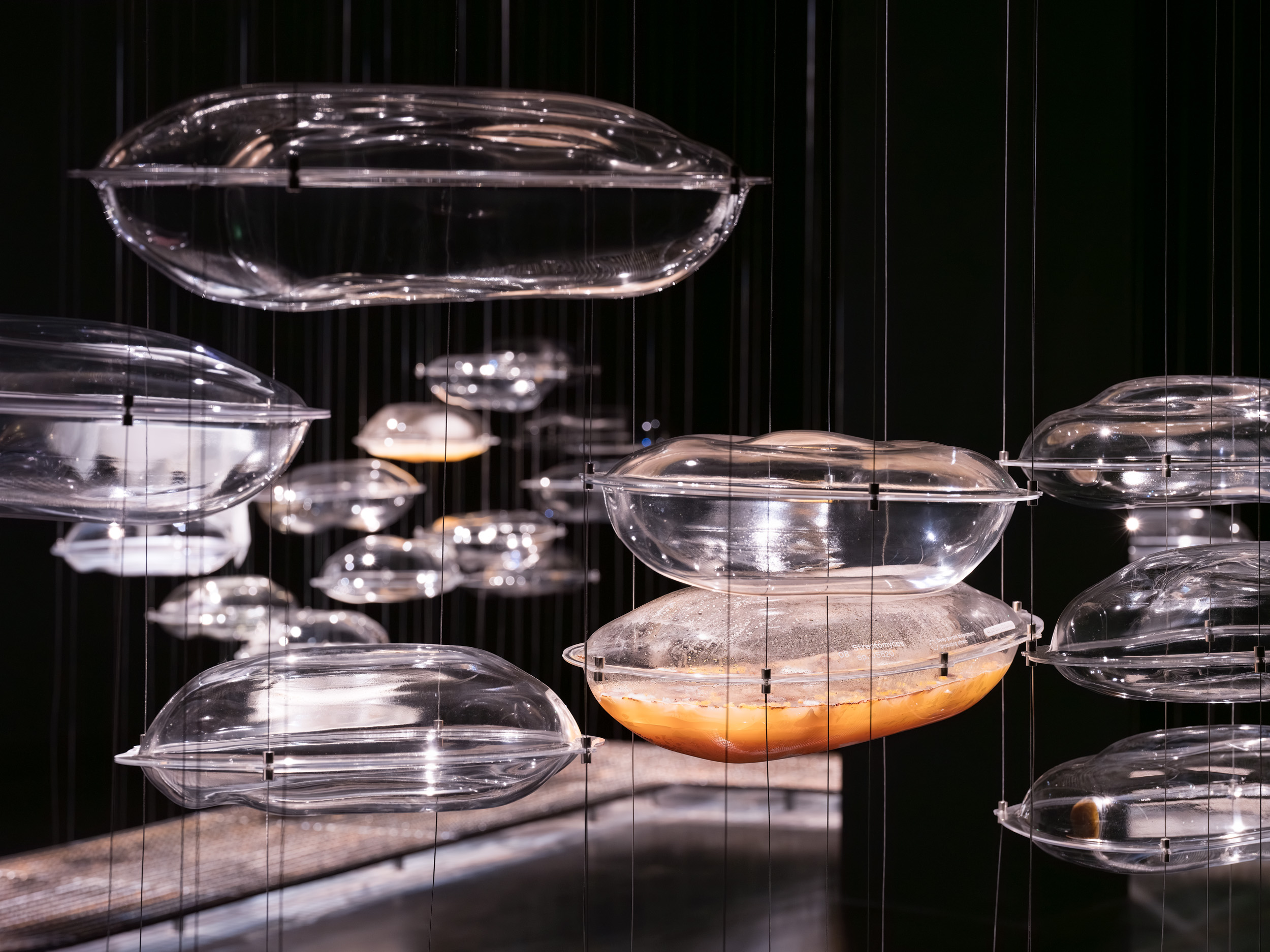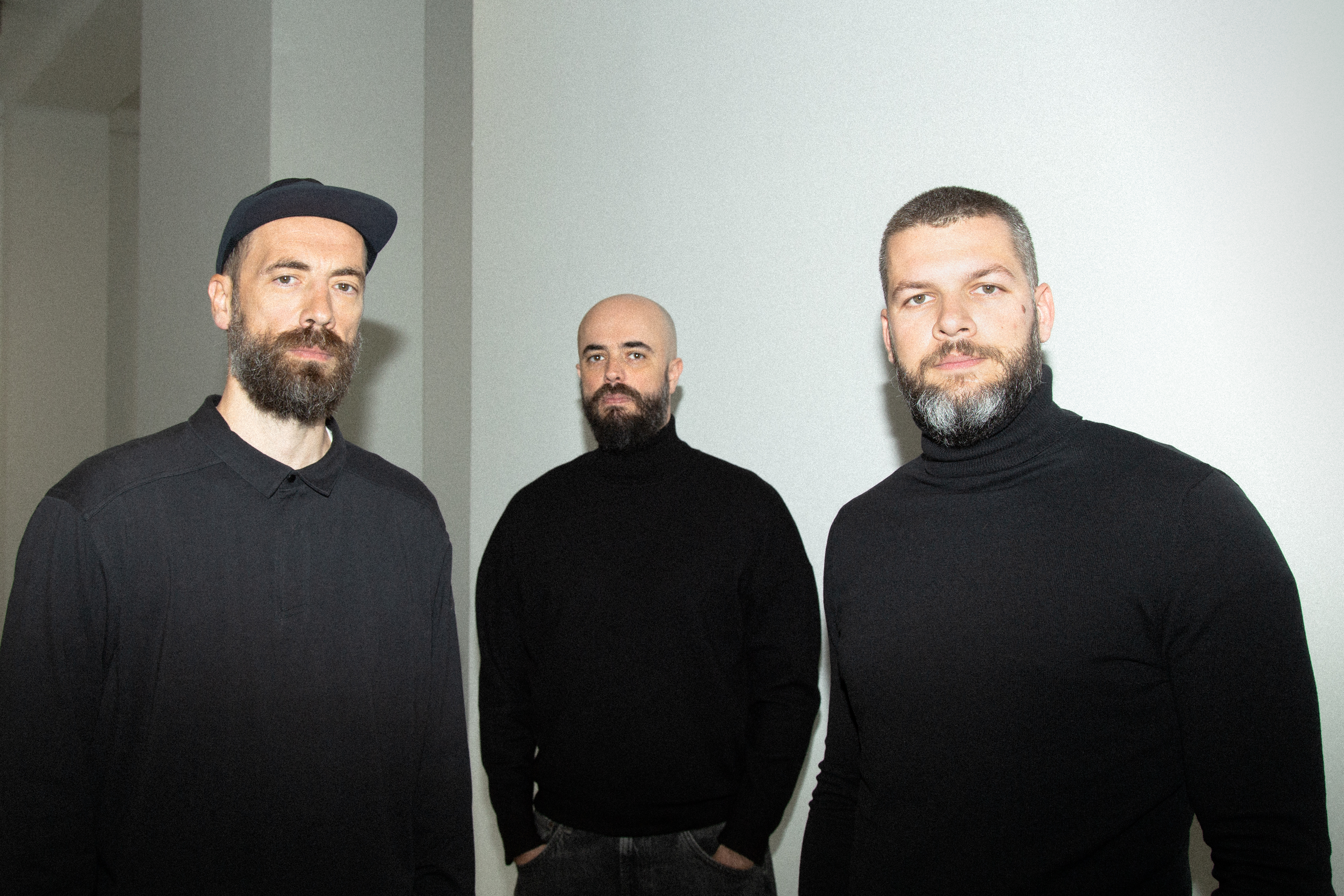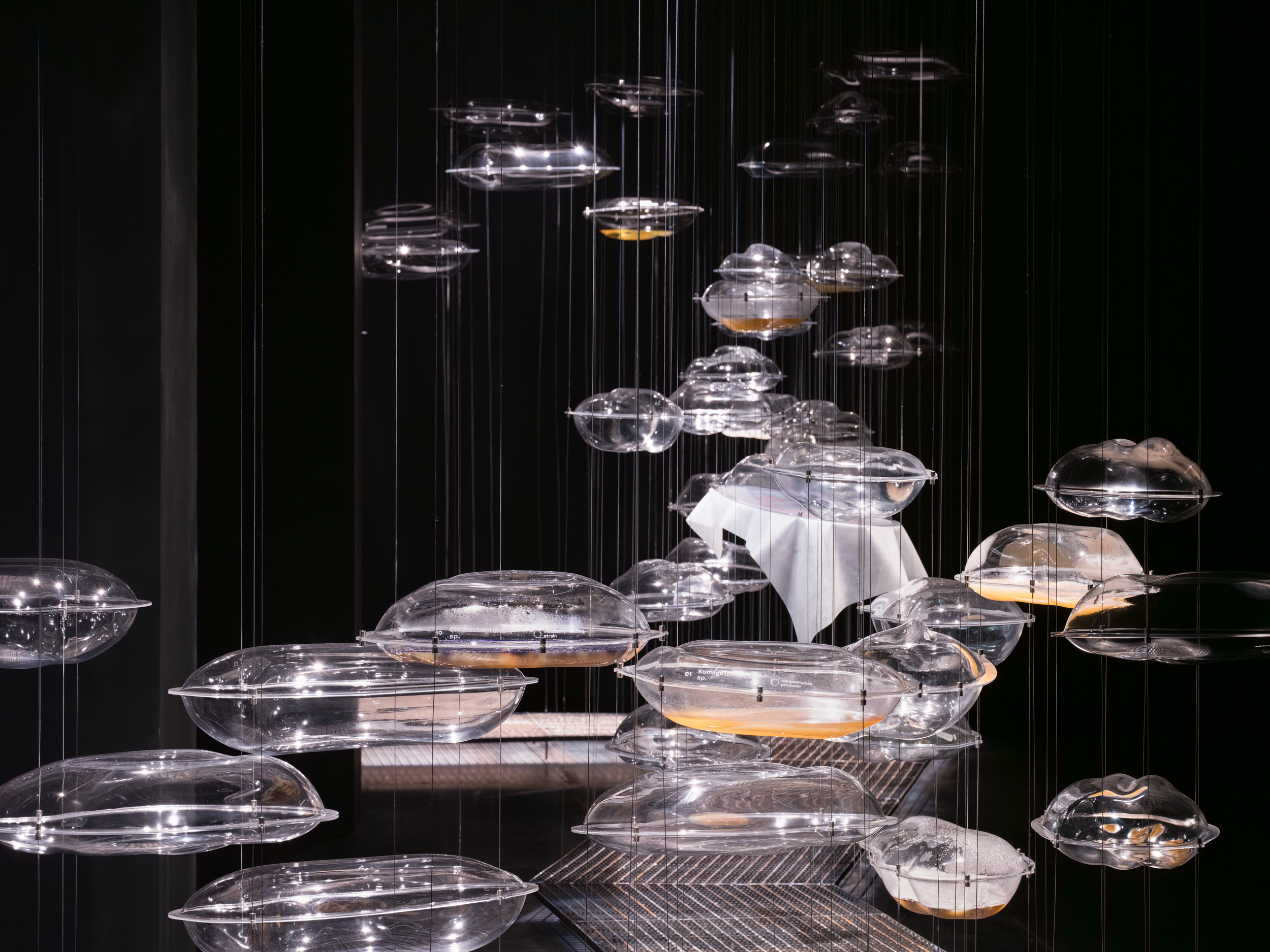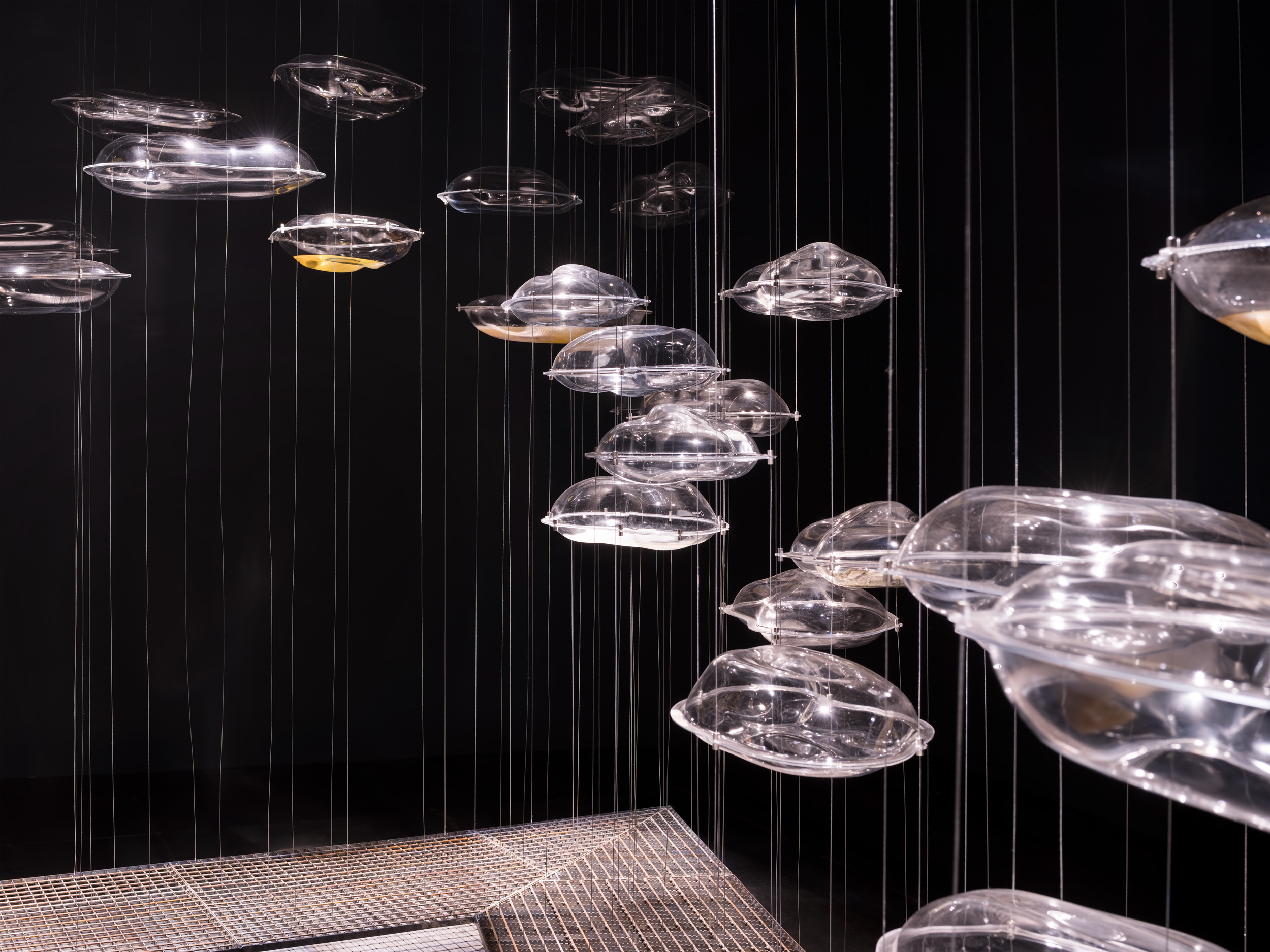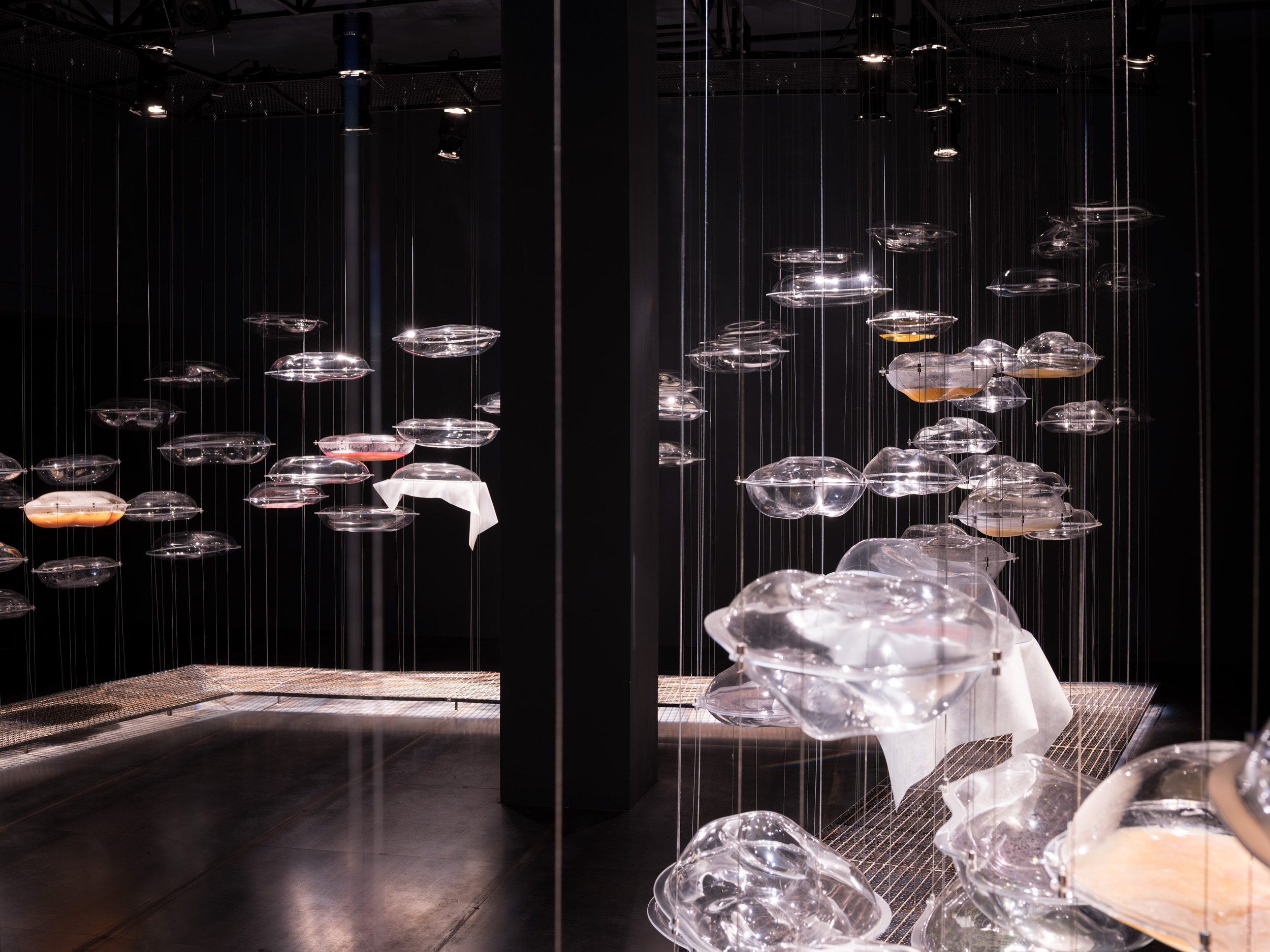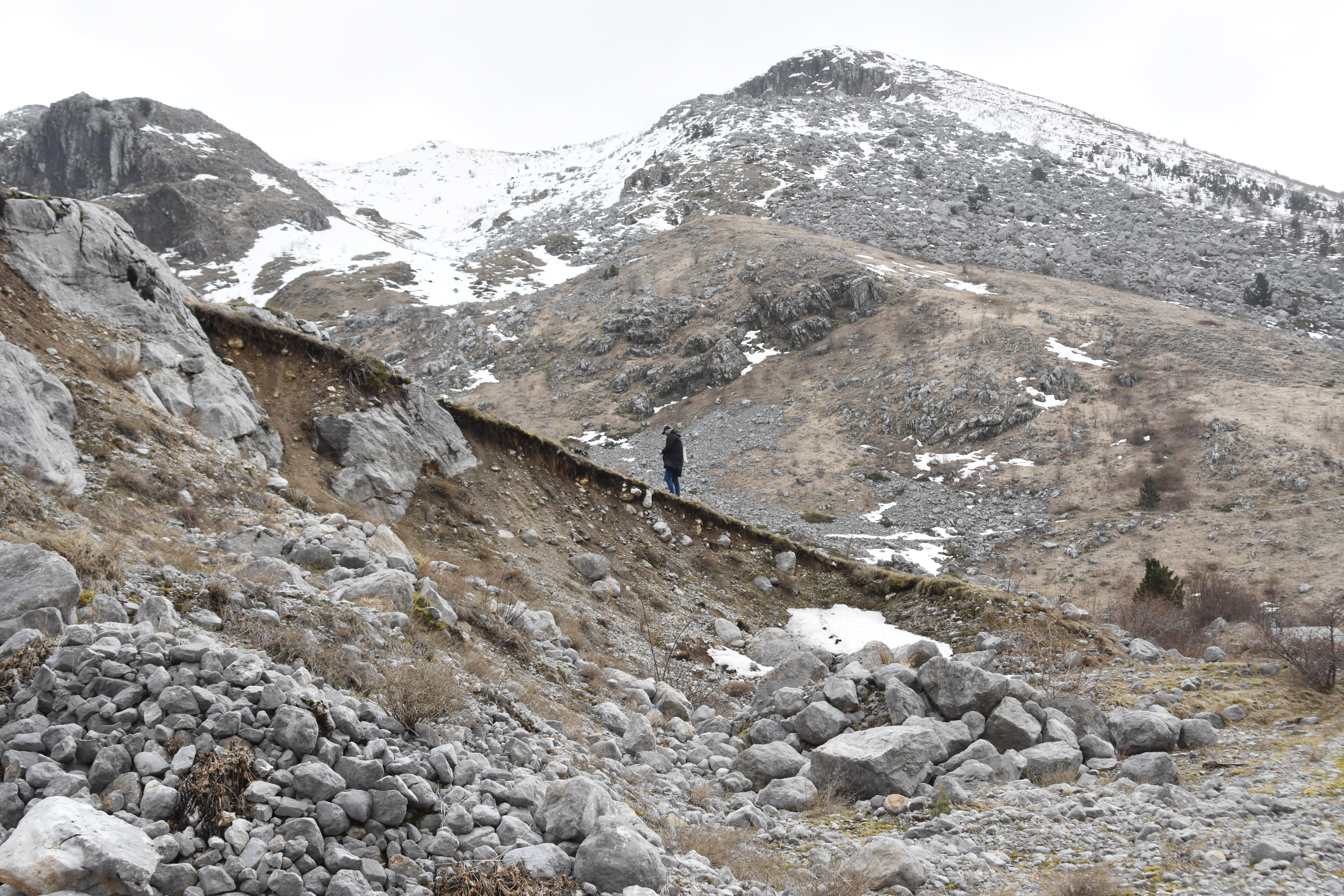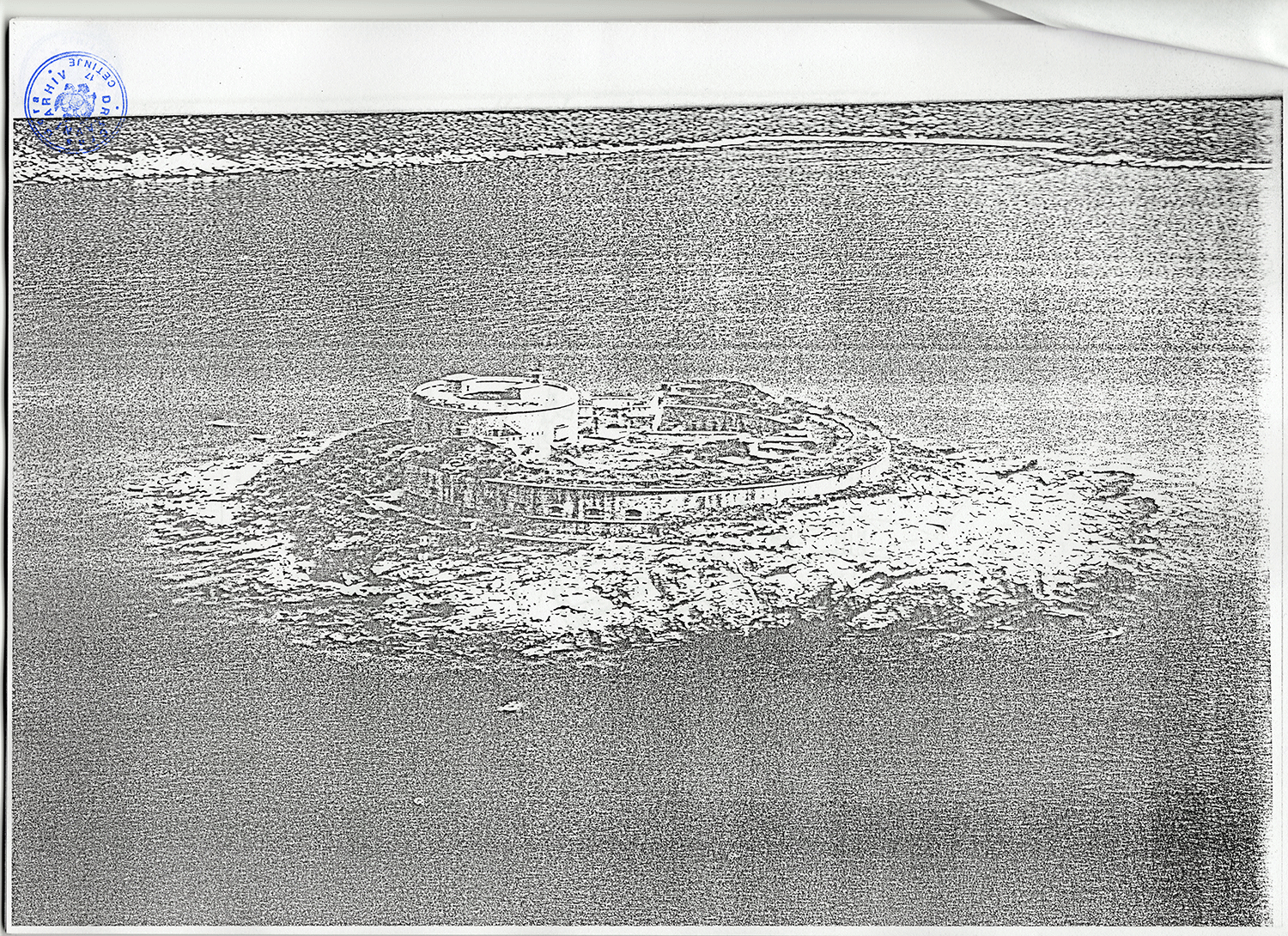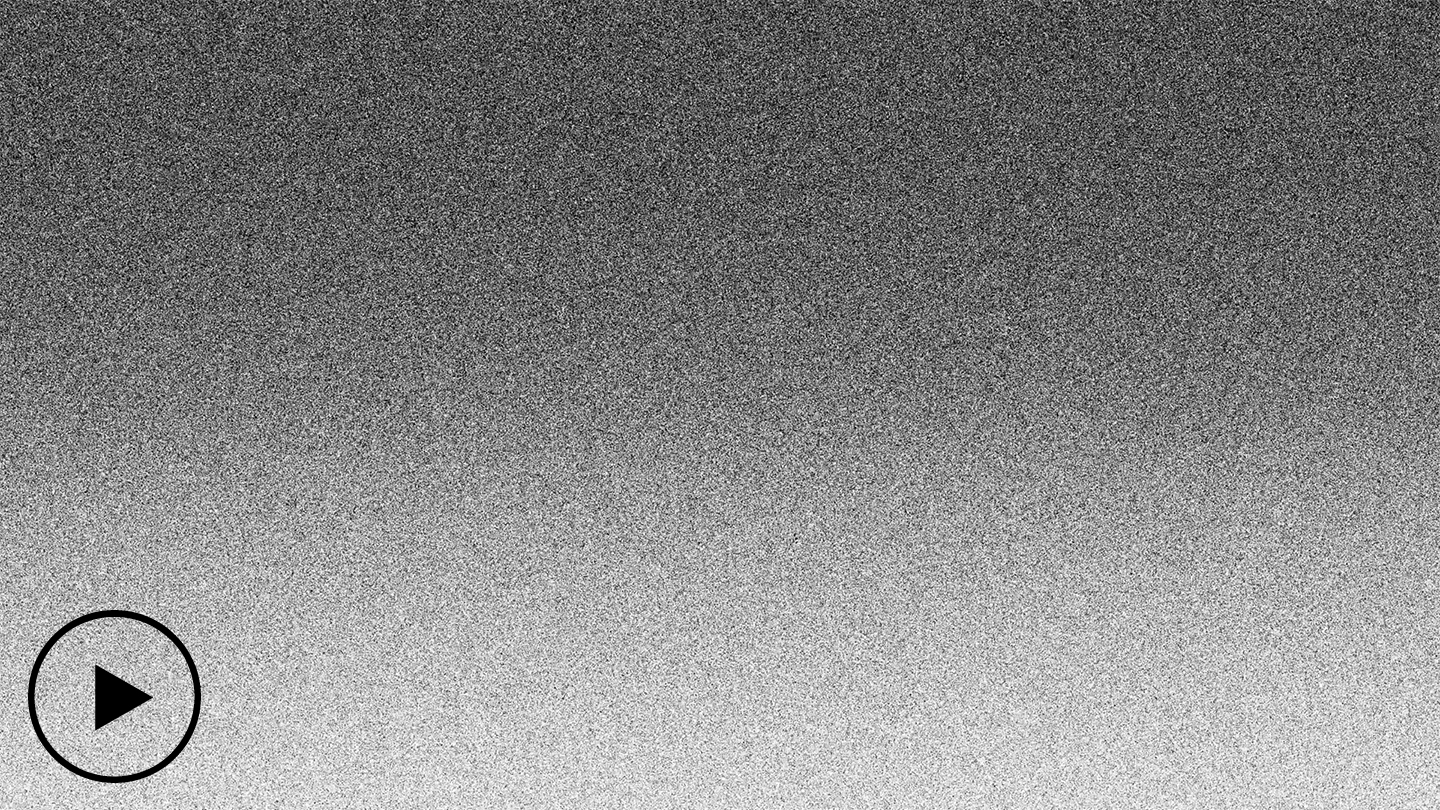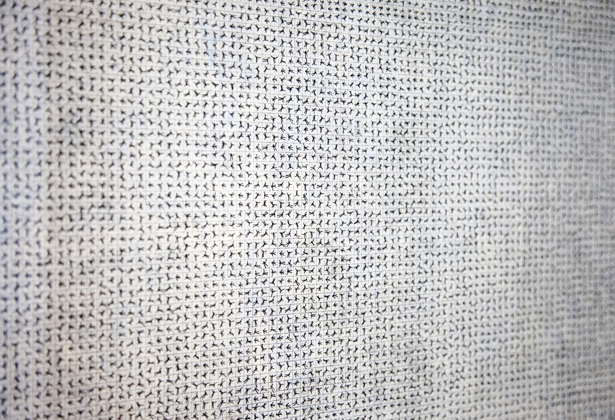May 10–November 23, 2025
Campo San Lorenzo
Venice 30122
Italy
At the 19th International Architecture Exhibition, dominated by immersive spectacles and grand installation gestures, the Montenegrin Pavilion offers something quieter and more intimate: a laboratory of slow processes, where biological matter—carefully isolated and safely prepared for public engagement—invites viewers to reconsider the interstitial spaces between art, science, and life.
The installation unfolds across a graphite, dimly lit interior, where clusters of earth samples and polycarbonate enclosures punctuate the space without dictating a single route or narrative. Visitors move slowly, almost hesitantly, as if adjusting their senses to the rhythms of another order of time—one measured not by human urgency but by microbial life cycles and gradual transformation. Situated on Campo San Lorenzo, away from the Biennale’s primary hubs of the Giardini and Arsenale, the pavilion benefits from a quiet dislocation, offering a rare moment of stillness and air amid the event’s more frenetic core. This relative distance has not deterred engagement: more than 4,500 visitors passed through the pavilion in the first month alone, drawn perhaps by the invitation to slow down and inhabit a different temporal scale.
Rather than presenting a finished thought, the pavilion embraces a state of becoming—an active, living interstice. Interstitium, as the authors frame it, refers to the often-overlooked spaces between soil particles, between disciplines, between life forms. These spaces are not merely illustrated but inhabited. The organisms at work—soil-derived microorganisms classified under Biosafety Level One—perform their slow labour beneath the surface, partially invisible yet profoundly present. The absence of overt spectacle shifts the viewer’s attention from visual consumption to careful observation, encouraging an attunement to processes that unfold beyond the scale of human immediacy.
Materials here are modest yet charged: soil samples, translucent thresholds, minimal interventions that prioritise process over display. Polycarbonate bubbles protect and isolate the biological systems but also function as liminal spaces—surfaces through which one can glimpse but not touch the ongoing life inside. There is a certain austerity to the presentation, but not coldness. It suggests a careful stewardship, a refusal to aestheticise what remains fundamentally nonhuman. In this way, the pavilion resists easy metaphors. Instead, it insists on a slow ethic of attention and care—qualities that feel increasingly urgent in the context of contemporary ecological collapse.
If interstitium gestures toward the spaces between, terram intelligere—to understand the land—proposes an expanded architectural practice: one not limited to form-making, but grounded in relational systems and porous infrastructures. Here, architecture emerges less as an object than as a medium for negotiating coexistence, drawing attention to the fragile thresholds where human and nonhuman worlds converge. The pavilion reframes the act of building as a kind of listening—an attunement to forces, rhythms, and agencies that typically exceed architectural control. In this sense, it becomes not a shelter from uncertainty but an invitation to inhabit it.
In its quiet unfolding, the Montenegrin Pavilion resists the compulsion to resolve, to frame, to conclude. Terram Intelligere: Interstitium does not seek mastery over uncertain ground; it remains suspended within it, asking how we might learn to dwell alongside what exceeds us. In the end, it suggests that architecture, may be less a project to be completed than a relation to be sustained—fragile, provisional, and always becoming.
Text written by Miljana Zeković, curator.
Terram Intelligere: INTERSTITIUM
Commissioner: Mirjana Đurišić / Curator: Miljana Zeković / Exhibitors: Ivan Šuković, Dejan Todorović, Emir Šehanović / Members of the creative team: Tamara Marović, Maja Radonjić.
Organised by: Directorate of the Chief State Architect at the Ministry of Spatial Planning, Urbanism and State Property of Montenegro.
